Whether you’re an apartment dweller with a small balcony or a homeowner looking to diversify your garden, pots, and containers offer a fantastic solution. Growing habanero peppers in pots requires some skill and knowledge, but once you’ve got the basics down, you’ll be rewarded with a vibrant, spicy harvest!
When growing habanero peppers in containers or pots, it’s crucial to use a pot that’s at least 3 gallons in size. Position the container in full sun if you can. Use well-draining soil. Fertilize upon planting and then apply a controlled-release fertilizer throughout the season. Pots have a tendency to dry out quickly, so consider using mulch to maintain moisture.
Read on to uncover tips and strategies on how to grow your own habanero peppers in pots or containers!
Is it okay to grow habanero peppers in pots or containers?
First off, let’s discuss whether habanero peppers can actually thrive in pots.
Growing habanero peppers in pots or containers is a practical option if you’re limited in space or if you want to diversify your garden. Ensure that the pot you use is at least 3 gallons large. Habanero peppers flourish in well-drained soil and adapt well to pots as they permit excess water to flow out. One potential issue you might encounter is the pepper plant becoming rootbound.
Adding potted plants is a wonderful way to diversify your garden. They can liven up your backyard landscape, adding an element of interest.
For city dwellers with limited outdoor space, such as a small balcony or patio, potted plants offer a viable gardening solution. Pots allow you to continue gardening even when you’re tight on space.
Fortunately, habanero peppers adapt well to pots or containers! If you’re familiar with the needs of your pepper plant, your habaneros can grow tall and provide a bountiful supply of peppers!
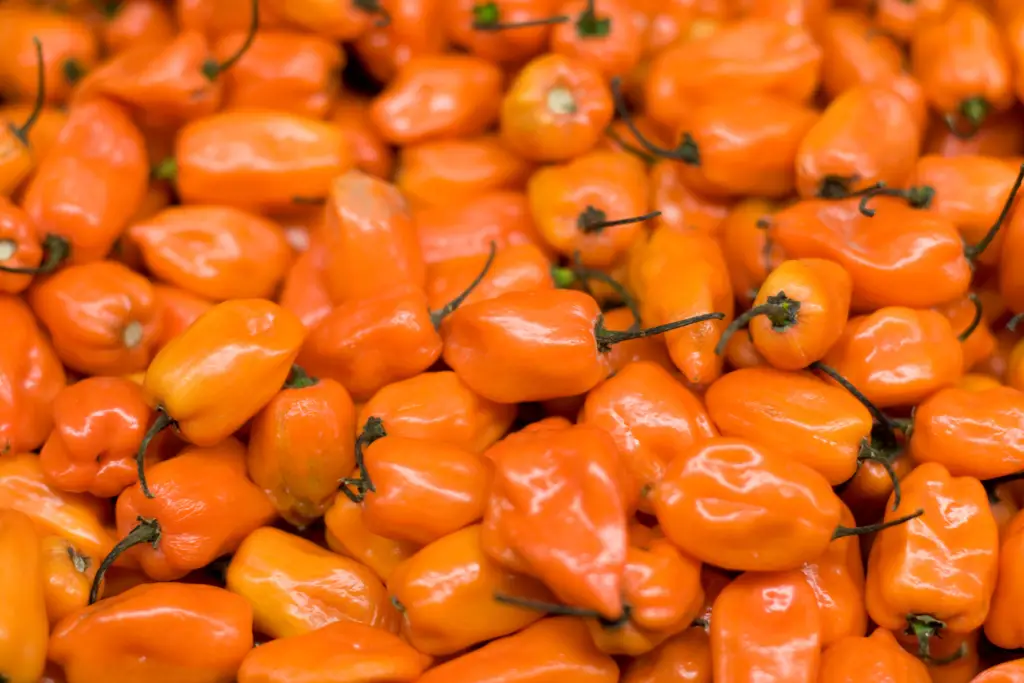
Potential benefits of growing habanero peppers in pots or containers
Several reasons may drive gardeners to grow their habanero peppers in pots or containers.
The potential benefits include:
- Space – If your space is limited, growing habanero peppers in pots is a smart solution. Container gardening is sometimes the only viable option, enabling those with restricted space to enjoy the pleasure of cultivation.
- Environmental control – In case of extreme weather, you can bring your habanero peppers indoors. This means your peppers remain protected, even in the event of a severe storm or unexpected frost.
- Drainage – Habanero peppers prefer well-draining soil, which pots provide better than the ground or raised beds.
- Pest control – Potted plants generally experience fewer pest issues than those grown in the ground. With fresh potting soil and elevated positioning, pots provide an extra layer of protection against pests and diseases.
- Soil control – Habanero peppers prefer a soil pH of 6. Potted plants allow easy control of soil pH, as you can start with the right soil from the get-go.
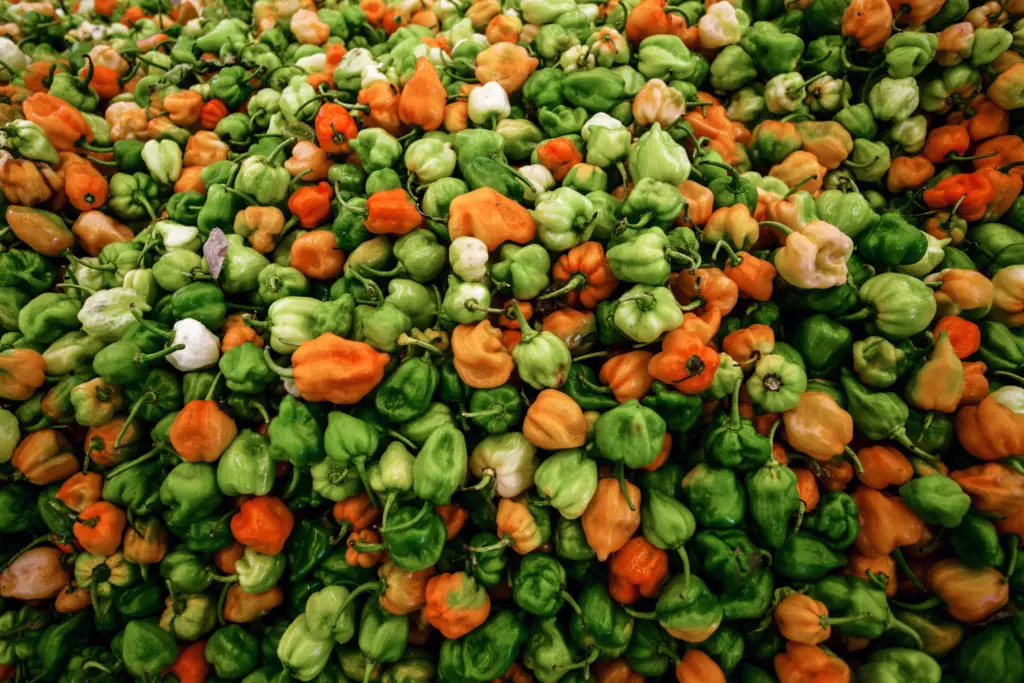
Potential issues growing habanero peppers in pots or containers
Although habanero peppers usually do well in pots, there are a few potential problems growing habanero peppers in containers to consider:
- Size requirements – You will need a fairly large container, at least 3 gallons. Small pots won’t be sufficient for habanero peppers, which can reach 2-4 feet in height.
- Space – Growing space will be restricted. You won’t have as much room growing in pots as you would in the ground or in raised beds.
- Attention – Habanero peppers may not reach their full potential if you’re not attentive. They may become rootbound, even in larger pots. This can hinder their growth and reduce yield. Regular monitoring can help avoid this issue.
- Environmental control – Plants in pots need frequent watering. Pots drain and dry out quickly, so it’s essential to ensure the soil stays adequately moist.
Let’s now delve into some top tips for growing habanero peppers in pots and containers.
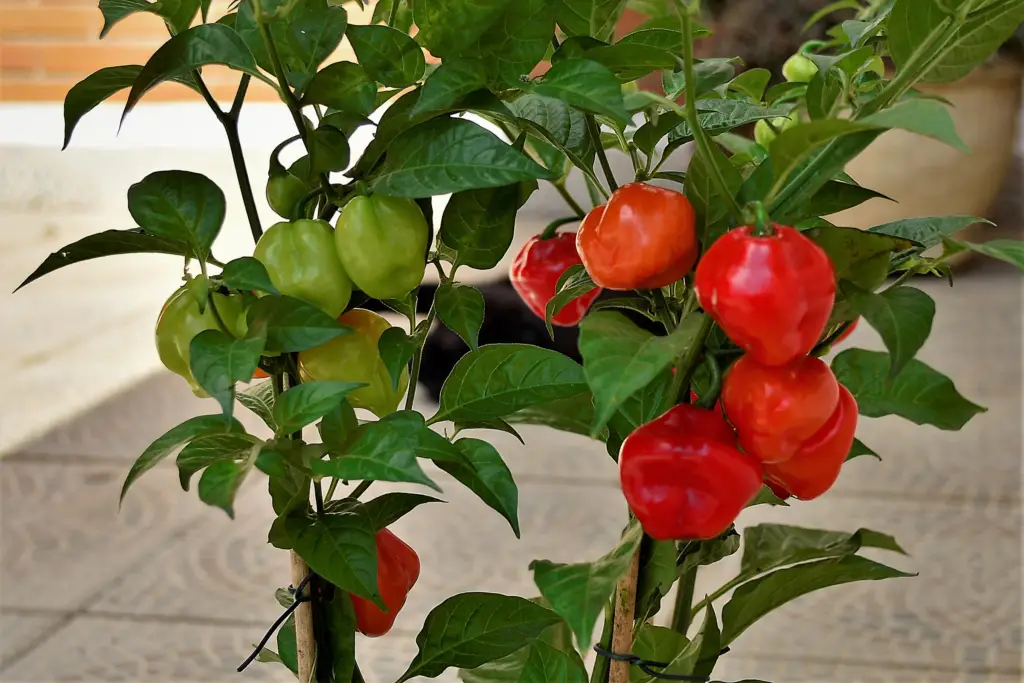
10 tips for growing habanero peppers in pots or containers
Here are my top five tips for successfully growing habanero peppers in pots or containers:
- Choose the right soil and fertilizer
- Ensure the pot is large enough
- Position your pots in the sun
- Maintain a balance between quick drainage and sufficient moisture
- Avoid letting your habanero peppers become rootbound
- Properly Harden Off Your Plants
- Monitoring and Managing Pests
- Regular Pruning
- Pollination
- Harvesting
Choose the right soil and fertilizer
Habanero peppers love well-draining soil with a pH of around 6.5-7. The best soil for habanero peppers is a mix of equal parts peat moss, potting mix, and perlite. This mix promotes excellent drainage while maintaining adequate moisture.
Fertilizer is equally important. Start with a balanced fertilizer when planting, for example, a 10-10-10 formula (Nitrogen-Phosphorus-Potassium). As your habaneros start to set fruit, switch to a low-nitrogen, high-phosphorus and potassium fertilizer. This shift will help promote fruiting over foliage growth.
Remember to incorporate compost or worm castings into your soil mix. These will provide extra nutrients and beneficial microbes that enhance soil fertility and plant health.
Ensure the pot is large enough
Habanero plants can grow quite large, often reaching 2-4 feet in height. To accommodate this growth, you’ll need a pot that’s at least 3 gallons in size.
A larger pot will provide more space for roots to grow, absorb nutrients, and support the plant. This can significantly influence the plant’s health, growth, and the size of your pepper harvest.
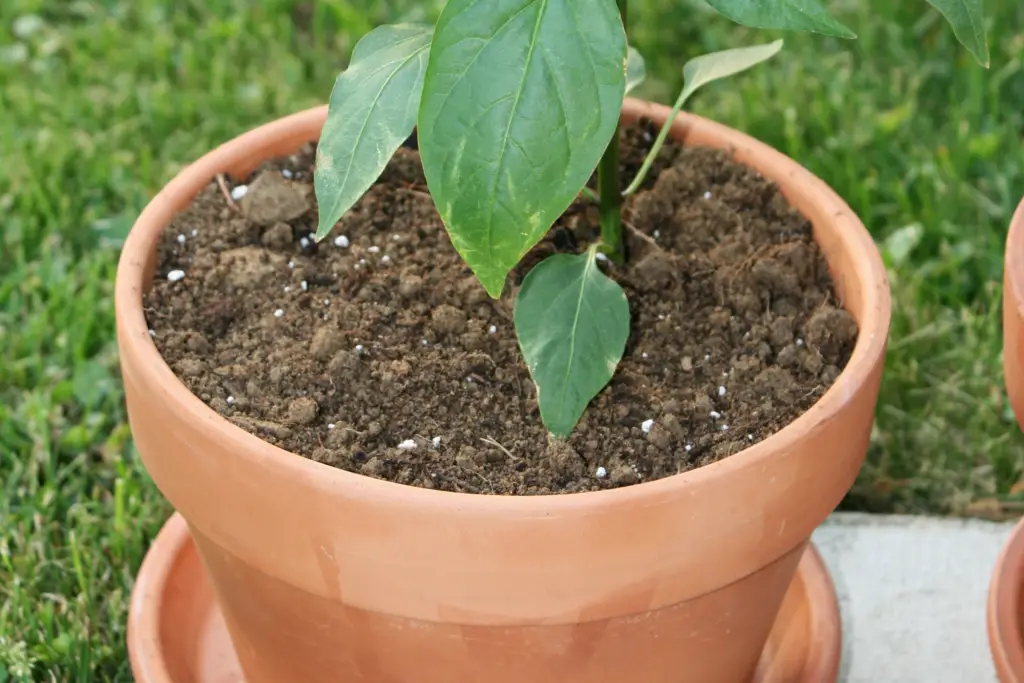
Position your pots in the sun
Habanero peppers require full sun exposure for optimal growth, which is generally 6-8 hours per day. If you’re placing your pots on a balcony or patio, try to position them where they’ll receive the most sun throughout the day.
Monitor the sun’s path and adjust the pot’s location if necessary. Remember, however, that too much direct sunlight during the hottest part of the day can cause the leaves to wilt or scorch.
Maintain a balance between quick drainage and sufficient moisture
While habanero peppers prefer well-draining soil, they also need consistent moisture to thrive. Potted plants can dry out quickly, especially during hot, dry weather.
To maintain a balance, water your plants deeply but less frequently. This encourages the roots to grow deeper into the soil, improving their resilience during dry spells. Consider adding a layer of mulch, such as straw or wood chips, on top of the soil in your pots.
Mulch helps retain moisture, prevent weed growth, and maintain soil temperature.
Avoid letting your habanero peppers become rootbound
If a plant becomes rootbound, its growth can be stunted, and it may not produce as many peppers.
To prevent this, check your habanero plants regularly for signs of being rootbound, such as slowed growth, yellowing leaves, or roots growing out of the drainage holes.If you notice these signs, consider transplanting your plant into a larger pot. This will give your plant more space to grow and will help improve its overall health and productivity.

Properly Harden Off Your Plants
Hardening off is a process to acclimate your indoor-grown habanero plants to outdoor conditions. This process usually takes about a week or two. Initially, place your plants outside in a shaded or protected spot for just 1-2 hours, making sure they are not exposed to strong winds or direct sun.
Gradually increase their outdoor time, and introduce them to more sunlight over the course of a week or two. This gradual process helps to toughen up their cell structure and reduce the risk of sunscald or wind damage.
Monitoring and Managing Pests
Habanero plants, like all plants, can attract various pests. Common ones include aphids, whiteflies, and spider mites. Regularly check the underside of leaves and watch for signs of damage like small holes, yellowing leaves, or a sticky residue which is a sign of aphids.
If you identify pests, use an organic pesticide or a solution of neem oil and water to spray the plant. Neem oil is a natural product that disrupts the life cycle of pests without causing harm to beneficial insects like bees.
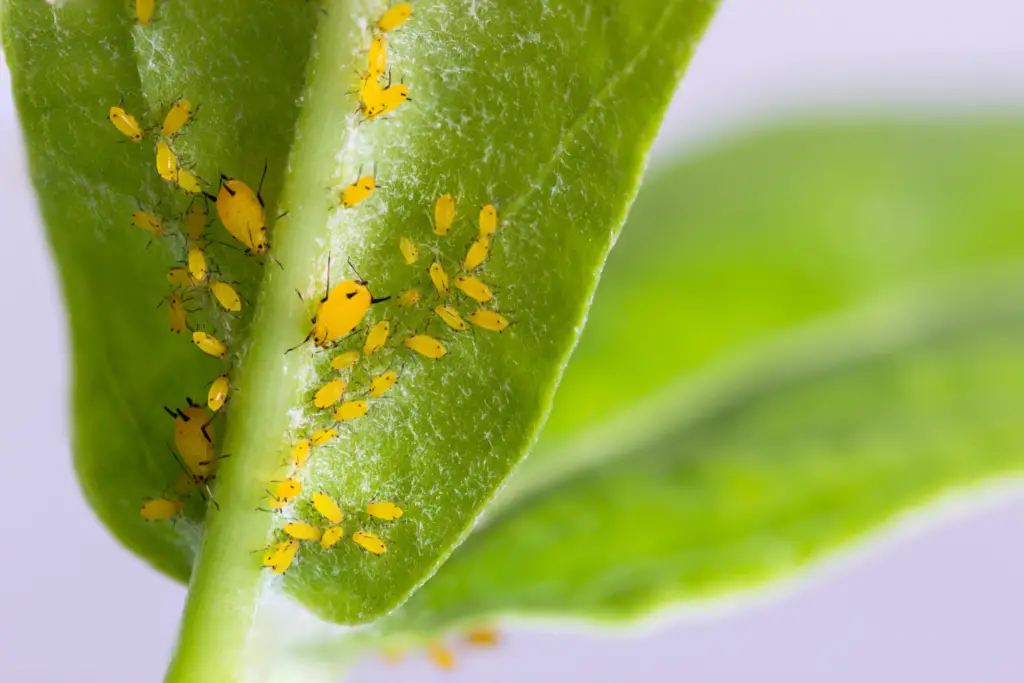
Regular Pruning
Pruning your habanero plants can lead to a more bountiful harvest. Once the plant reaches about 1 foot in height, pinch off the top growth point. This will stimulate the plant to grow two new stems, making it bushier and more robust.
You can also remove any small or weak branches or branches that are crowding the center of the plant. This increases air circulation and light penetration, reducing the chances of fungal diseases.
Pollination
Habanero peppers are self-pollinating, but if you are growing them indoors or in an area with few pollinators, you might need to assist in the pollination process. You can do this by gently shaking the plant to help the pollen move from the male parts of the flower to the female parts.
Alternatively, you can use a small, soft paintbrush to collect pollen from the center of the flower (the stamen) and then gently brush it onto the pistil, the receptive part of the flower located in the center.
Harvesting
Habanero peppers change color from green to bright orange or red when they are ripe and ready to be harvested. They should feel firm to the touch, and the skin should be glossy.
To harvest, don’t pull the peppers directly from the plant as this can damage the branches. Instead, use a pair of sharp scissors or pruning shears to cut the stem of the pepper. Always wear gloves while handling habanero peppers as they contain capsaicin, a compound that can cause a burning sensation if it comes in contact with skin or eyes.
After harvest, peppers can be stored at room temperature for about a week or in the refrigerator for longer storage.
By following these tips, you can ensure that your potted habanero plants are well-cared for, leading to a successful and rewarding harvest.

